HA Final exam extensive review PDF

| Title | HA Final exam extensive review |
|---|---|
| Author | Mayra Martinez |
| Course | Advanced Concepts Of Adult Nursing |
| Institution | Nova Southeastern University |
| Pages | 12 |
| File Size | 258 KB |
| File Type | |
| Total Downloads | 81 |
| Total Views | 133 |
Summary
Final exam for advanced health assessment for NP...
Description
Final Concepts Review
https://quizlet.com/587408497/nsu-fnp-flash-cards/?i=35jwg&x=1jqY# Cardiac ● cardiac auscultation main areas ○ 5 cardiac auscultation points ■ AORTIC: RIGHT, 2nd intercostal space, right sternal border ■ PULMONIC: LEFT, 2nd intercostal space ■ ERB’S POINT: LEFT, 3rd intercostal space (S1, S2) ■ TRICUSPID: LOWER LEFT, 4th intercostal space- left sternal border ■ MITRAL: LOWER LEFT, 5th intercostal space--medial to midclavicular line
○ ● auscultating mitral valve pathology ○ Auscultating mitral valve pathology ■ S1- closure of mitral/tricuspid valves ● Split M1, T1 ● Rarely detectable
■ S2-closure of aortic/pulmonic valves ● Split = A2, P2, pathologic valve split.** VALVE PROBLEMS** ● physiologic = with respiration. Right ventricle filling delayed, causing audible split ● Paradoxical split: on end expiration; sig for delay in closure of aortic valve- **LEFT BUNDLE BRANCH BLOCK** ○ aortic stenosis
■ S3- Vibration from ventricular filling (Ken-tuck-y) ● fluid overload states, CHF ● pregnancy
■ S4- atrial gallop: occurs at end diastole (pre-systole) as atria contract and try to push blood into a resistant ventricle (TEN-NE-SE-E) ● left ventricular hypertrophy (LVH) ● restrictive cardiomyopathy ● myocardial infarction ● chronic hypertension
○ ● cause for splitting 2nd heart sound ○ Cause for splitting 2nd heart sound ■ VALVE PROBLEMS ■ LEFT BUNDLE BRANCH BLOCK
○ ● murmurs: mid-diastolic crescendo murmurs, diastolic & systolic (locations of these murmurs), aortic stenosis ○ murmurs auscultation: diastolic & systolic (locations of these murmurs), aortic stenosis ■ https://youtu.be/dBwr2GZCmQM ■ https://youtu.be/sGHV5_ieDP4 * ■ https://youtu.be/6YY3OOPmUDA * ■ https://youtu.be/ZUHpAaVpiY8 * ■ Whooshing sounds produced by turbulent blood flow ■ Time: Systolic or diastolic ■ Shape: changed in intensity over time ■ Auscultation site/location: Aortic, pulmonic, tricuspid, or mitral ■ Heart murmurs Grades 1 - 6 ● assess for timing, duration, pitch, intensity, pattern, quality, location, radiation, respiratory phase variation
○ Systolic murmurs ■ Mitral regurgitation: when mitral valve does not close properly and blood “regurgitates” back into LEFT atria during systole. Murmur STARTS AT S1...when AV valves close.. and stays for the ENTIRE DURATION OF SYSTOLE. ● HEARD BEST IN APEX (MITRAL REGION) radiates to left axilla. ● Radiates to back or clavicle ● causes: rheumatic fever, Marfans
● Prone to CHF ● S/S- SOB, pulmonary edema, orthopnea, decrease exercise intolerance, palpitations, AFib ● reduced by valsalva ■ Tricuspid regurgitation: when tricuspid valve does not close properly and blood “regurgitates” back into RIGHT atria during systole. Murmur STARTS AT S1...when AV valves close.. ● HEARD best in TRICUSPID area and radiates UP, along left sternal border ● ■ Aortic stenosis: aortic valve doesn’t open properly and blood is forced through a narrow opening . The blood flow starts small, rises to a maximum mid systole at the peak of ventricular contraction then attenuates towards the end of systole. Results in a crescendo-decrescendo. diamond shaped murmur . ● starts a short moment after S1. Preceded by an EJECTION CLICK, by opening of the stenotic valve. ● loudest in the aortic area ● sound radiates to the carotid arteries in the neck ● causes: congenital, rheumatic fever, calcium deposits ● S/S: SOB with activity, anginal type chest pain, dizziness, palpitations ● reduced by valsalva ■ Pulmonic stenosis: Same as aortic stenosis, but ● heard in PULMONIC area. EJECTION CLICK. ● does NOT RADIATE TO CAROTIDS
○ Diastolic murmurs ■ Aortic valve regurgitation: when aortic valve does not close properly and blood “regurgitates” back into LEFT ventricle during diastole. ● Heard along the LEFT STERNAL BORDER ● Peaks at beginning of diastole when the pressure difference is highest, then rapidly decreases as the equilibrium is reached ● Heard best at 2-4th left intercostal border
■ ■
■ ■ ■
○
● high pitched blowing decrescendo ● best heard with patient sitting forward, at end expiration ● causes: congenital, endocarditis, rheumatic fever, uncontrolled HTN, Marfans, syphilis, giant cell arteritis ● S/S: shortness of breath, CHF, palpitations, widened pulse pressure, water hammer pulse Pulmonic regurgitation: Mitral stenosis: heard best at apex while patient is in left lateral decubitus position ● low pitched, decrescendo, rumbling ● causes: Rheumatic fever 5-10 years after, calcium deposits, radiation to chest ● S/S: may begin with AFIb, cough, difficulty breathing, fatigue, ankle edema ● augmented by valsalva Tricuspid stenosis: Diastolic murmurs are only graded to a grade 4 Ms. ARD ● Mitral stenosis Aortic Regurgitation Diastolic ● Mr. ASS- Mitral regurgitation Aortic Stenosis Systolic
○ ○
○ ● manifestations of chronic heart disease in children ○ Congenital heart disease manifestations ■ Coarctation of the aorta: severe narrowing of the descending aorta ■ Truncus arteriosus: ■ Transposition of the great arteries: ■ Tricuspid atresia: ■ Tetralogy of fallot: ● -Ventricular septal defect ● -Right ventricular hypertrophy ● -Pulmonic stenosis ● -Dextroposition of aorta ● ■ Atrial septal defect: ■ Ventricular septal defect: ■ Total anomalous pulmonary venous connection: ■ https://youtu.be/KjvW59vGlY8
○ ● signs of cardiac causes for dyspnea ● CHF (Right & left S/S) ● Preload, Afterload, cardiac output
● Chest pains (Pleuritic, pleural friction rub, PE, Anginal, MI (types of MI,) ○ Pericarditis: ■ Sharp pain: Substernal, may radiate to neck and/or left arm ■ Sudden onset. May be accompanied by cardiac friction rub ■ Aggravating factors: deep breathing, supine position ■ Alleviating factors: Sitting up, leaning forward, anti-inflammatory meds ■ ○ * ○ Pulmonary Embolism: ■ Stabbing pain over lung area ■ S/S: Dyspnea, tachycardia, hemoptysis, hypotension, cyanosis ■ Aggravating factors: inspiration ■ Alleviating factors: Analgesics ○ * ● Congenital heart disease manifestations ● Dysrhythmias strips: Second degree av block type I, Atrial Fibrillation, third degree AV block
HEENT ● Lymphatic System; Signs of malignancy, accessible lymph nodes to evaluate ○ Identification of lymph node drainage ■ https://youtu.be/HLd9s9Tr8qk ■ ■ “Everything South of an Innie” ● Everything below the belly button drains to the Superficial Inguinal nodes except the gonads and lateral feet ● * ■ Lateral feet drain to the popliteal lymph nodes, behind the knees ■ Gonads drain into the Para-aortic lymph nodes (sides of abdominal aorta) ● “Drains the Penis Anchors” = Para Aortic
■ Regional lymph drainage generally follows blood supply ● ex. The inferior mesenteric artery (in the descending colon) drains into the inferior mesenteric nodes ■ Thoracic outlet is common exit point for a lot of the lymph drainage in body (near 1st rib on upper side of thorax) ○ ○ Distinguishing glands from lymph nodes ■ Is a lymph node -> in a typical lymph node area, not typical for another cause ( ex. polyp, skin cancer, aneurysm) ● ● ● ● Lymphatic System; Signs of malignancy, accessible lymph nodes to evaluate ○ Accessible lymph nodes: ○ Head and neck: ■ Occipital ■ Jugulodigastric ■ Tonsillar ■ Post-auricular ■ Pre- auricular ■ Superficial Cervical ■ Posterior cervical ■ Supraclavicular ■ Sub-mandibular ■ Submental ■ Deep cervical chain ■ ○ Other areas ■ Axillae ■ Epitrochlear ■ Inguinal ■ Popliteal ■ Spleen ■ ○ Signs of malignancy: ■ Lymphadenopathy (enlarged lymph nodes) ■ Lymphangitis (red streaks in skin)
■ Lymphedema ■ Palpable lymph node in supraclavicular on LEFT malignancy of abdominal or thoracic malignancy (Virchow node) ■ Harder node= malignancy likely ■ More tender= inflammation likey ○ ● ● Body organs included in the lymphatic system ○ Spleen ○ Thymus ○ Tonsils ○ ●
○ ● Manifestations of Otitis Media ○ inflammation in the middle ear, associated with a middle ear effusion that becomes infected by bacterial organisms ● Manifestations of Uveitis ● Manifestations of sinusitis
Pulmonary ● Infectious mononucleosis ○ Infectious mononucleosis ■ Caused by the Epstein-Barr virus (EBV). ■ Typically occurs in teenagers, but you can get it at any age. ■ The virus is spread through saliva ■ fatigue, fever, rash, and swollen glands
○
● Tuberculosis ○ Signs and symptoms of Tuberculosis ■ Chronic infectious disease that most often begins in the lung but may then have widespread manifestations ■ ■ Fatigue, weight loss, lethargy, anorexia (loss of appetite), a low-grade fever that usually occurs in the afternoon, and night sweats; purulent cough ■ ■ Latent tuberculosis infection: Asymptomatic
○ ● Pectus excavatum ● Location for chest tube insertion for pneumothorax ○ Location for chest tube insertion for pneumothorax ■ Identify the fifth intercostal and the midaxillary line. The skin incision is made in between the midaxillary and anterior axillary lines over a rib that is below the intercostal level selected for chest tube insertion
○ ● Asthma classification/Gold Standard for Asthma Dx ○ Asthma Severity Classification Guidelines and symptoms ■ Small airways obstruction due to inflammation and hyperreactive airways ■ Causes bronchial hyperresponsiveness, constriction of the airways and variable airflow obstruction that is reversible. ■ ■ S/S: Chest constriction, expiratory wheezing, dyspnea, non-productive coughing (light yellow, scant), prolonged expiration, tachycardia, tachypnea, pulsus paradoxus ● nighttime awakening, exacerbations requiring corticosteroids, impairment in daily life, FEV1 (...
Similar Free PDFs

HA Final exam extensive review
- 12 Pages

HA EXAM\' 1
- 55 Pages

Chem Final Exam Review
- 12 Pages

Final Exam - Review notes
- 92 Pages

Bio Final Exam Review
- 2 Pages

Final EXAM Review booklet
- 5 Pages
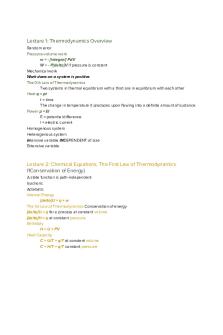
CHEM303 final exam review
- 4 Pages

Psychology Final Exam - Review
- 13 Pages
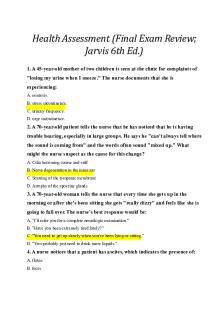
Jarvis Final Exam Review
- 12 Pages
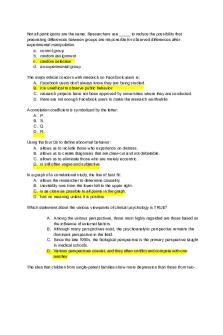
Final exam review
- 96 Pages
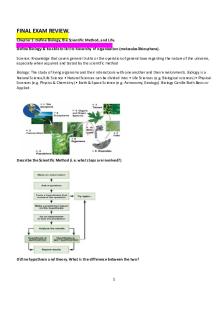
Final Exam Review
- 48 Pages
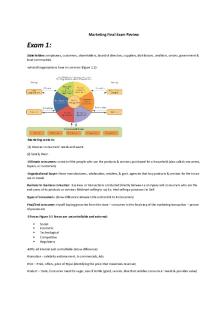
Marketing Final Exam Review
- 15 Pages
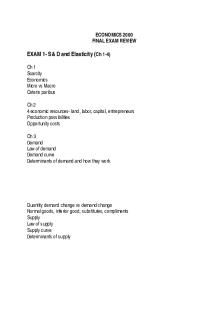
Final exam review
- 8 Pages
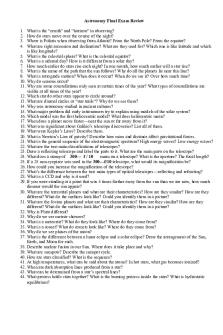
Astronomy Final Exam Review
- 2 Pages
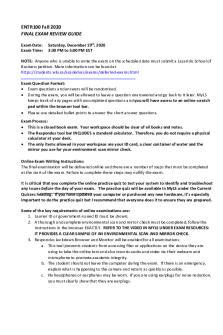
Final Exam Review Guide
- 4 Pages

Final exam review flsp4420
- 5 Pages
Popular Institutions
- Tinajero National High School - Annex
- Politeknik Caltex Riau
- Yokohama City University
- SGT University
- University of Al-Qadisiyah
- Divine Word College of Vigan
- Techniek College Rotterdam
- Universidade de Santiago
- Universiti Teknologi MARA Cawangan Johor Kampus Pasir Gudang
- Poltekkes Kemenkes Yogyakarta
- Baguio City National High School
- Colegio san marcos
- preparatoria uno
- Centro de Bachillerato Tecnológico Industrial y de Servicios No. 107
- Dalian Maritime University
- Quang Trung Secondary School
- Colegio Tecnológico en Informática
- Corporación Regional de Educación Superior
- Grupo CEDVA
- Dar Al Uloom University
- Centro de Estudios Preuniversitarios de la Universidad Nacional de Ingeniería
- 上智大学
- Aakash International School, Nuna Majara
- San Felipe Neri Catholic School
- Kang Chiao International School - New Taipei City
- Misamis Occidental National High School
- Institución Educativa Escuela Normal Juan Ladrilleros
- Kolehiyo ng Pantukan
- Batanes State College
- Instituto Continental
- Sekolah Menengah Kejuruan Kesehatan Kaltara (Tarakan)
- Colegio de La Inmaculada Concepcion - Cebu